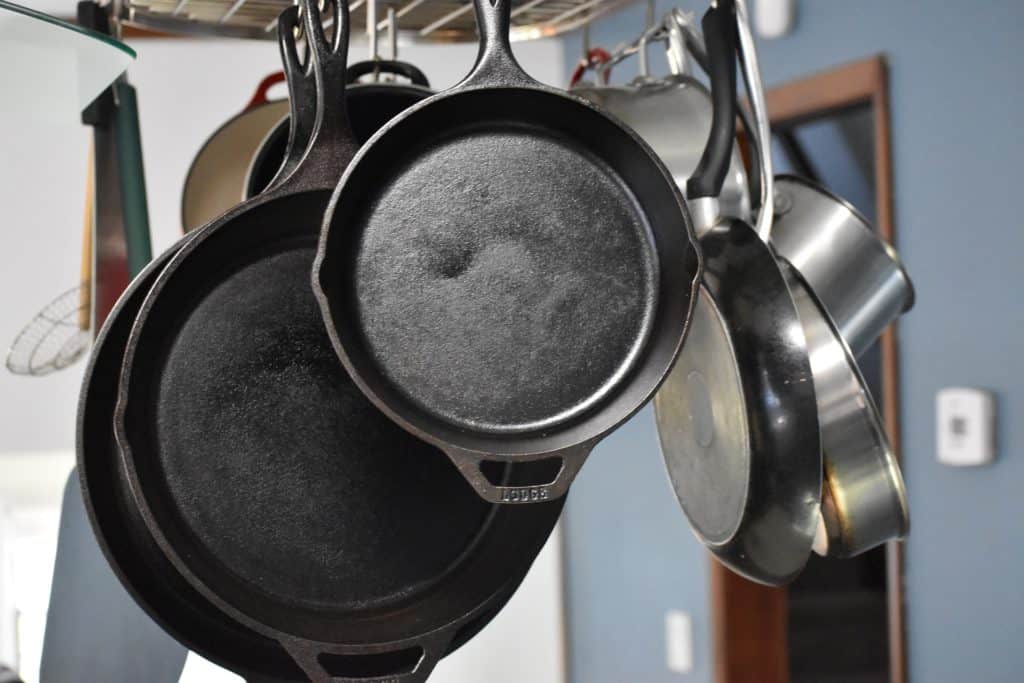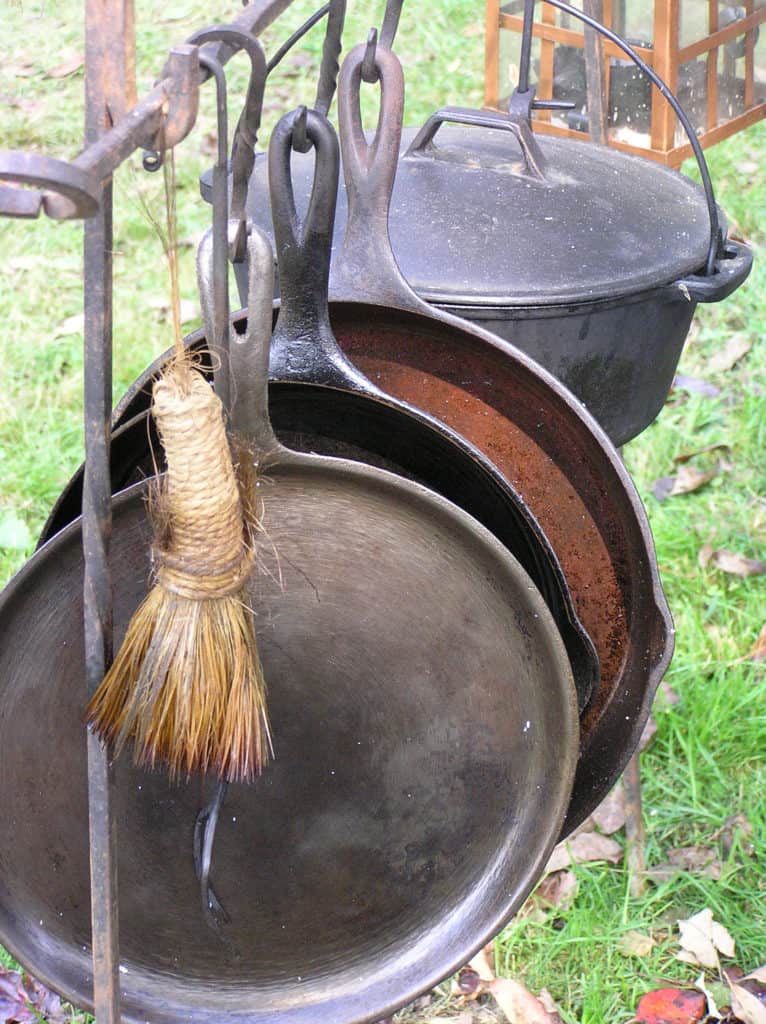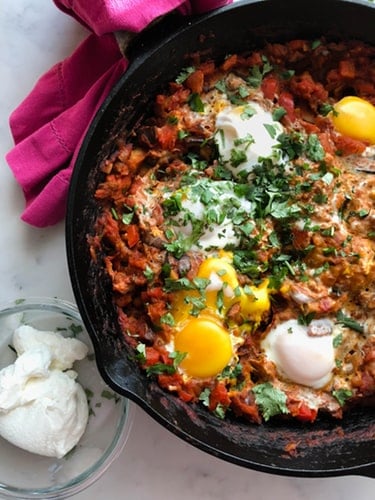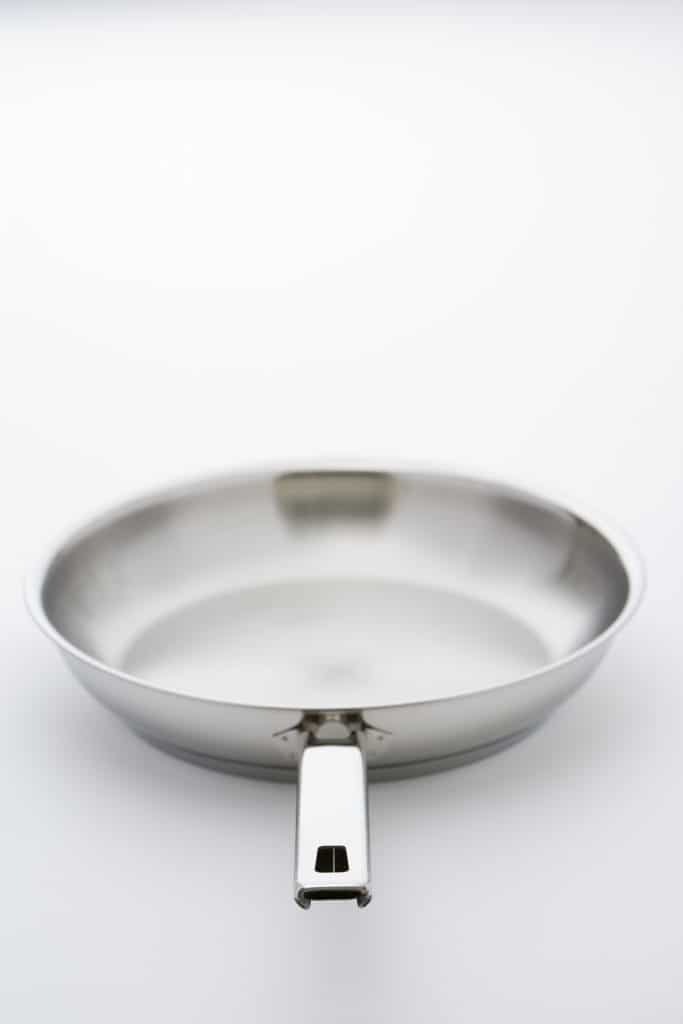As an Amazon Associate we earn from qualifying purchases.
There will come a time in your cooking journey when you want to invest in the best cookware to improve your cooking capabilities. Choosing what pans to buy will most likely be on the top of your list. And it is guaranteed that the choice will boil down to cast iron vs stainless steel.
Quick Navigation
Cast Iron vs Stainless Steel

These two types of pans are must-haves in a kitchen. They both cater to providing the best cooking results for different types of cooking techniques. This is why it is so challenging to choose which one to invest in.
What is a Cast Iron Pan?
A cast iron pan is also referred to as a cast iron skillet. It is a pan that is made up entirely of a soft metal called a cast iron. It absorbs and releases heat slowly, making it perfect for cooking with.
What is a Stainless Steel Pan?
It is a pan made from several different components that give it its stainless characteristic. Because of this, it is completely rustproof. It is light in weight and therefore easy to cook with in the kitchen.
Comparing Cast Iron and Stainless Steel
Deciding on which pan to buy will significantly depend on both your cooking and kitchen habits. The best way of choosing between the two is by understanding their strengths and weaknesses. This is to help you know what best suits your way of cooking.
This is a comprehensive list of everything you need to know about cast iron and stainless steel pans. This will help you decide which one to choose to invest in.
Cast Iron Advantages
Cast iron pans can be found used in many different cuisines all over the world. Its rich history and impressive story is a good example of why this is a good choice for cookware. These are the many other advantages of buying a cast iron skillet for yourself.
- Lifespan: One of the most common reasons why cast iron pans are so popular is that, with proper care and maintenance, they can literally last more than 50 years. There are even accounts of cast iron pans being passed down from generations of cooks in families.
- Affordable: The cost of a cast iron pan can range between $25 do $50. It is extremely affordable as cookware that is made to last a long time. If you choose to buy a second-hand one, it’s okay too. Just make sure you season it well before using it.

- A good investment: As an investment, there’s nothing more appealing than knowing your money will go a long way (or last a long time). A cast iron pan is a perfect example of a great investment. You will definitely get your money’s worth for how long this cookware can last.
- Retains heat well: Cast iron pans are absolutely great at retaining heat. A cast iron pan is so effective at retaining heat that it can stay at a certain temperature, even after it is off of a heat source. It can stay hot for a significant amount of time.
- Great heat distribution: A cast iron pan will evenly distribute the heat on its surface. This is perfect for getting the right temperature, and an even temperature, on anything you cook on it. This is also a reason why chefs love to use this for cooking steaks and other proteins.
- Versatile to cook with: With the proper care and maintenance, a cast iron pan works effectively as a non-stick pan. It can be used to saute and sear on. It can also safely be used in an oven as an additional oven pan. Some cooks even use it as a warm plate as it retains heat so well. You can even use it for cooking desserts like a dutch baby
- Easy to clean: A cast iron skillet does not need a lot of effort to clean. Food naturally detaches itself from its cast iron surface. It is a lot easier to clean than most of your standard cookware.
Cast Iron Disadvantages
Unfortunately, there are some downfalls with the use of cast iron pans. These are the disadvantages you have to consider when buying a cast iron pan.
- Constant maintenance: A cast iron pan can react to different types of food. It can leave an undesirable taste on food if you don’t season your cast iron the right way. There’s a specific way to clean and season your cast iron so that it sustains its quality to cook effectively.
- It is heavy: A cast iron skillet is relatively heavier than other cookware. And it can be difficult to work with on a daily basis. Most especially because its handle also absorbs the heat, and therefore, it can be challenging to lift or move.
- Avoid acidic ingredients: The acidity in certain ingredients can be too powerful that it reacts to the soft metal, and can even be the cause of an undesirable taste that comes from the pan and acid reacting.
Stainless Steel Advantages
Found in most professional kitchens across the country, the stainless steel pan has some very attractive advantages that make it a perfect investment for cookware.

- Lightweight: One reason why you’ll likely find stainless steel pans in professional kitchens is that they are light in weight. That makes them easy to handle. It’s easy to use multiple pans at the same time, for a long period of time. Not to mention how easy they are to wash.
- Heats up quickly: There’s no wasting time with a stainless steel pan. You can have a hot surface to cook on in a matter of seconds after you put it on a flame stove.
- Doesn’t rust or chip: You don’t need to take extra care to avoid rusting or chipping. The material is made so that it can’t rust. It can withstand constant heat and pressure.
- Preserves flavor well: The stainless steel material is great at cooking ingredients in intense heat, without adding to, or subtracting any unwanted flavor. It not only preserved the real flavor of the ingredients well, but in many cases, enhances their true aroma.
- Visually appealing: Nothing looks more beautiful than a stack of clean stainless steel pans. It is visually appealing to have in the kitchen. It feels both clean and adds a minimal touch to a kitchen, acting somewhat like a functioning piece of home decor.
- Multiple shapes and sizes: You can buy stainless steel pans in different shapes and sizes. In many cases, stainless steel pans fan be bought in sets for a great overall price.
- Oven safe: Stainless steel pans are almost always safe to use in the oven, unless indicated otherwise. You can use it to finish cooking all types of dishes straight from the stove to the oven. Make sure you confirm that it’s oven safe before using it.
Stainless Steel Disadvantages
On the downside, this seemingly perfect cookware does have some disadvantages you need to be aware of.
- Expensive: Compared to a cast iron pan, stainless steel is a lot more expensive. Similarly, cast steel is also more expensive than cast iron because of higher material costs. If you find one that’s cheap, there’s a good chance that it is not a good quality product. It is still better to invest money into buying a high-quality pan over a cheap one.
- Uneven heat distribution: The stainless steel pan is not the best pan to use if you want an even cook on all parts of its surface. You will have to always check and adjust your food accordingly, to get even cooking.
- Food sticks: If you’re not using some sort of grease or oil to stop food from sticking to the pan, you will most likely find yourself struggling to cook with ingredients such as eggs, fish, and meat.
Cast Iron Vs Stainless Steel Cooking Styles
For two completely different types of pans, it is just natural that they both have their own strengths when it comes to cooking styles. Here’s a closer look at what you can and can’t cook with a cast iron skillet and a stainless steel pan.
Cooking With a Cast Iron Pan

Cooking with a cast iron pan is an absolute thrill simply because of how versatile this pan is.
- Bake: You can bake both savory and sweet dishes. A cast iron skillet works really well for both. As it is oven safe and distributes heat evenly, it is perfect for making dishes such as pies that need that even heat to make the perfect crust.
- Sear and Saute: Cast iron pans are great at creating that perfect browning crust you want to get from a good sear. It’s important to give the cast iron pan time to heat up to sear your ingredients effectively. This pan is good for getting the right sear or saute on proteins like fish and steak.
- Frying: Because of its ability to hold a constant and even temperature, the cast iron pan is also ideal for deep frying ingredients. Obviously, you have to choose the right sized ingredients that can be submerged within the depth of the pan. When doing so, it’s a guaranteed way to get a good fry.
- Braising: A good braise requires maintaining a slow and even heat. You can easily achieve this with a cast iron skillet. A good tip for a great braise in a cast iron pan is to cut your ingredients into small, equal pieces to get a more even cook.
Cooking With a Stainless Steel Pan
If you have the chance to buy different sizes of stainless steel pans, you can maximize its many uses. You don’t ever have to be concerned about it’s durability.
- Baking: Stainless steel is definitely oven safe. But it is best to use this for dishes that do not require an even temperature to cook. Unless coated with copper, stainless steel pans can have the tendency to have hot spots.
- Sear and Saute: A stainless steel pan isn’t naturally non-stick, so you will need to use some form of fat or oil to make sure your ingredients do not stick. Other than that, as the pan is lightweight, it is easy to handle and maneuver.
- Frying: Stainless steel pans come in all shapes and sizes. They can definitely be used for deep frying even large-sized protein. The key to a good fry is giving the stainless steel pan time to heat the oil up evenly.

- Braising: Braising in a deep stainless steel pan is easy as you will have enough space to include as many ingredients as possible.
- Making sauces: Stainless steel pans are absolutely ideal for making sauces. They are easy to maneuver and stir, even for a long period of time.
What You’re Looking for From a Pan
- Easy to clean: Both cast iron and stainless steel pans are relatively easy to clean. It’ll depend entirely on the way you cook, and if anything sticks to the pan.
- Minimal maintenance: You should definitely stick to stainless steel pans if you want to work with a pan that needs almost no maintenance
- Quick cooking: Stainless steel pans heat up quickly. If you’re a parent that needs to whip up quick meals every day, or you don’t have the time to spend hours cooking, it’s best to stick to stainless steel.
- Cooking steaks in: Cast iron skillet are more ideal for cooking steaks because the material distributes the heat well.
- From stove to oven: Both materials can work for a stove to oven cooking. But a cast iron pans are often more preferred as they work a lot better for oven cooking than stainless steel. You can do a lot more with a cast iron skillet, than you can with a stainless steel pan, if you’re more of a baker.
Conclusion
If it’s choosing between a cast iron vs a stainless steel pan, it all boils down to choosing what suits you and your way of cooking. They are both great cookware choices and will be a great investment for your passion of cooking. The choice depends entirely on which material you think you’ll find easiest to work with.
